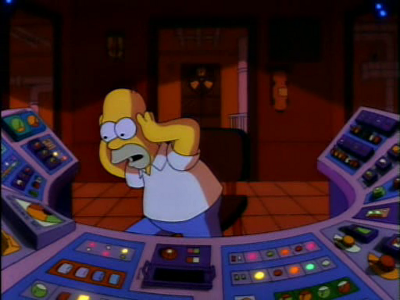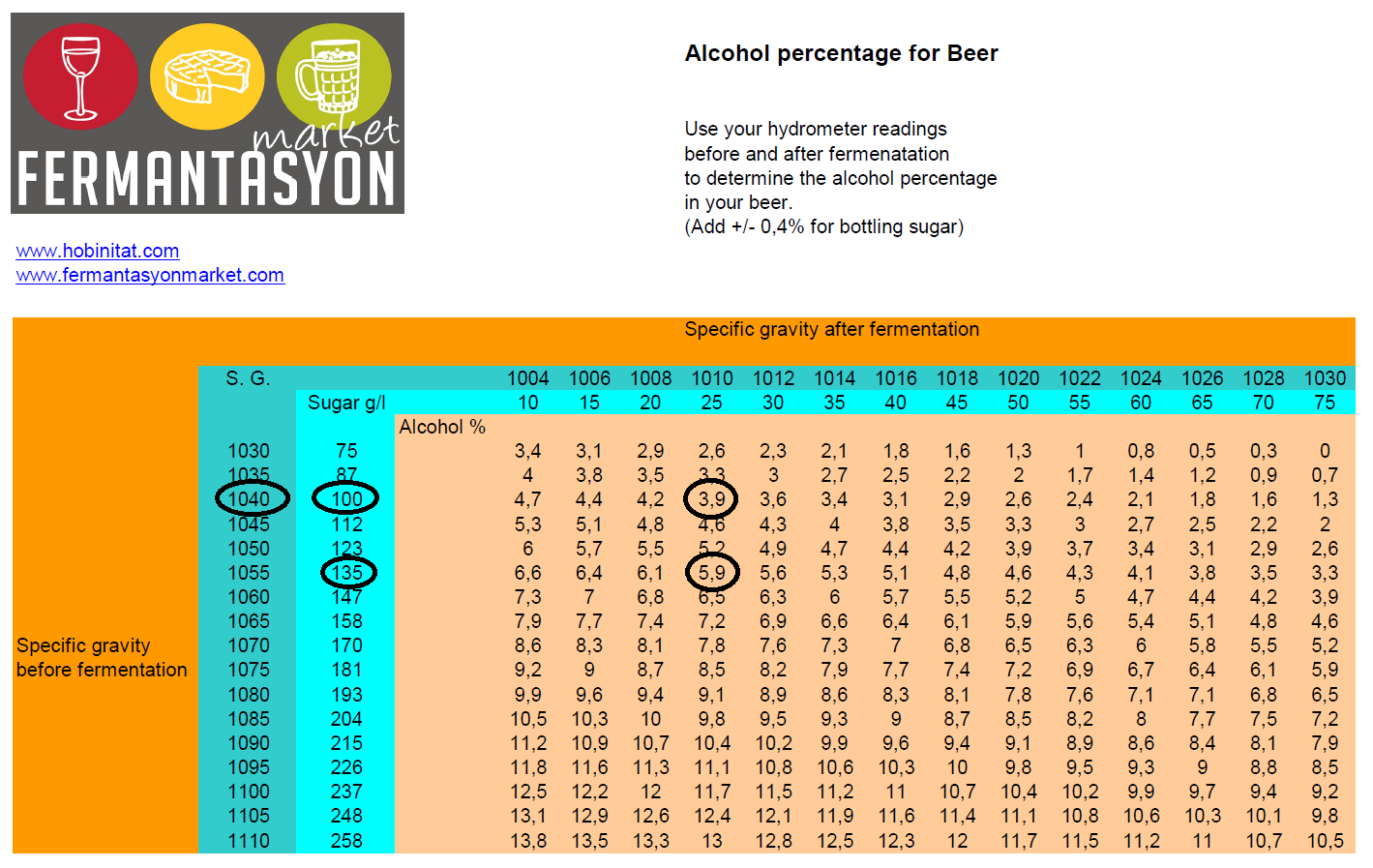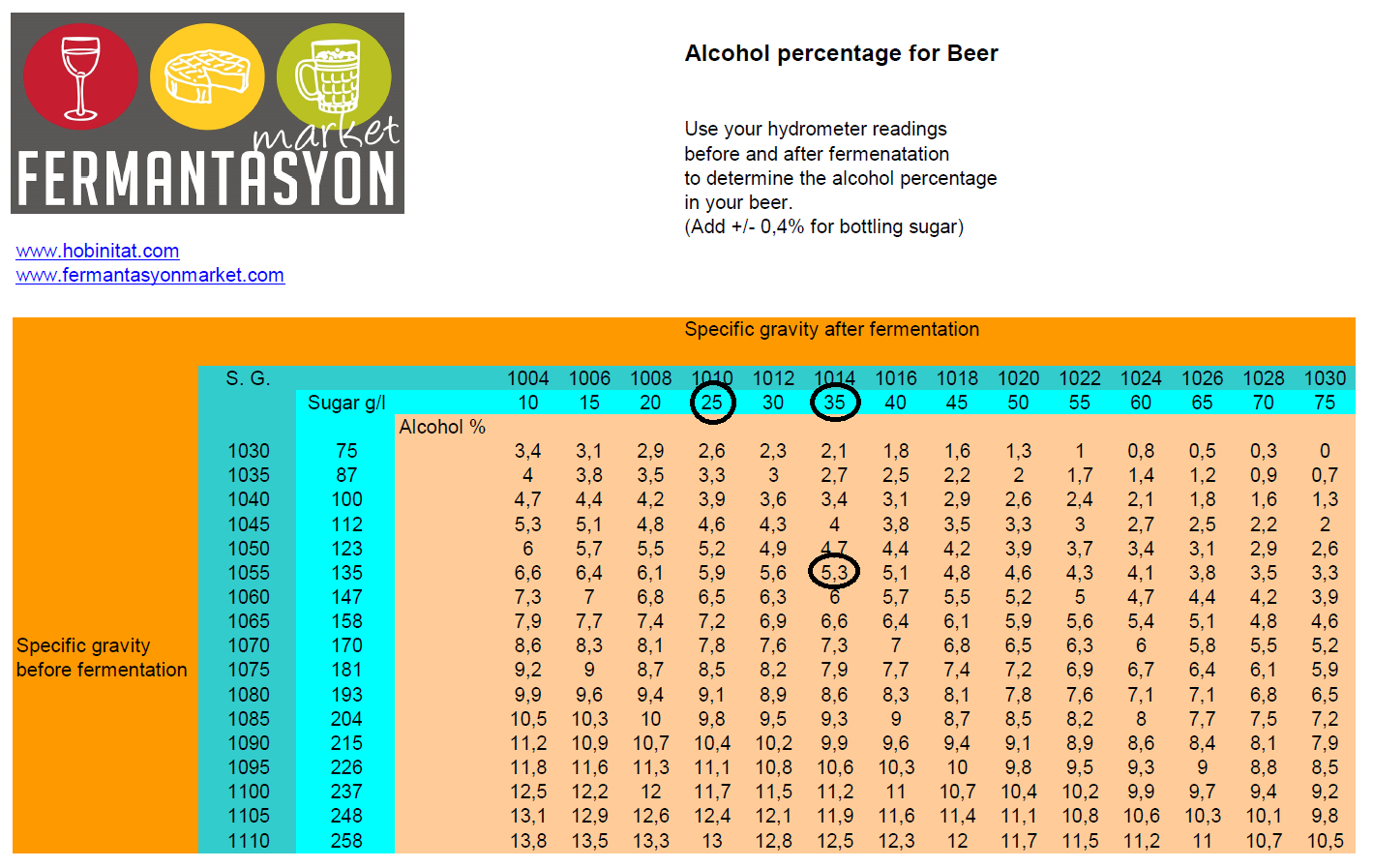The point of measuring the Specific Gravity is to determine and correct the amount of alcohol you will have in the finished beer.
I think beer is a bit more difficult than wine because you are not able to predict the S.G. after fermentation very well. (In wine it is always practically 0 if you let fermentation finish) Since it is not exact science you will have to estimate this.
- Measure the S.G. with the hydrometer.
- Check the corresponding column in the table according to the estimated SG after fermentation to find out the alcohol percentage and amount of sugar.
- In case you want more alcohol; look up the amount of sugar that you need for this percentage and compare it to the amount of sugar available in the wort.
- Determine the amount of sugar per liter you need to increase the S.G. to the desired value and add it.
Yes, let’s do an example.
You want to make 10 liter beer with 6% alcohol. You expect that the specific gravity after fermentation will be 1010.
The hydrometer measurement before fermentation is 1040.
In the table (see below) you can see that there is 100 gram per liter sugar and that the alcohol percentage after fermentation will be 3,9%.
This is obviously very little. Maybe something went wrong. In the table you can see that you need 135 gram per liter to reach 5,9% alcohol.
So you need to add 135 – 100= 35 gram per liter. So in total you need to add 350 gram sugar to your wort.
In case you want to know how much alcohol your beer contains and how much sugar is left, you have to make a measurement after the fermentation as well.
- Measure the S.G. again. Please note that this measurement will be influenced by the alcohol so it will be a little bit lower than expected.
- In case the S.G. is lower than you expected there is more alcohol in the beer and less residual sugar. Case closed.
- In case the S.G. is higher than you expected, there is less alcohol and more sugar that the yeast could not eat. In this case you can decide to add some more sugar to start a new fermentation and create more alcohol. You can use the table to determine how much sugar should be left and how much sugar is actually left and add the difference.
Be very sure that fermentation has stopped otherwise you will get a very alcoholic beer! - In case the S.G. is much higher than you expected the fermentation is either not finished (Wait for 10 days) or stuck! (You have a problem)
Let’s continue with the example.
The fermentation is finished and you make another SG measurement. It turns out to be 1014 instead of 1010. You can decide to wait for 10 days to see if the SG will decrease or, if you are very sure that fermentation has finished you can decide to add some more sugar.
In the table you can see that your beer has 5,3% alcohol and that there is 35 grams of sugar left per liter.
So, if you want to get an alcohol percentage of 5,9 % you need to add 35 – 25 = 10 gram sugar per liter (So 100 gram in total) and wait for this to be fermented before you can bottle.
Some things about the table that you don’t really need to know:
I have not found a book that describes the formulas that define the table. For some reason the books that I have, do not make the link between S.G. and amount of sugar. (Or Plato or Brix values)
The table is made by me by combining a table that is in one of my books and some other information that I found on the internet.
Cheers
Hans




